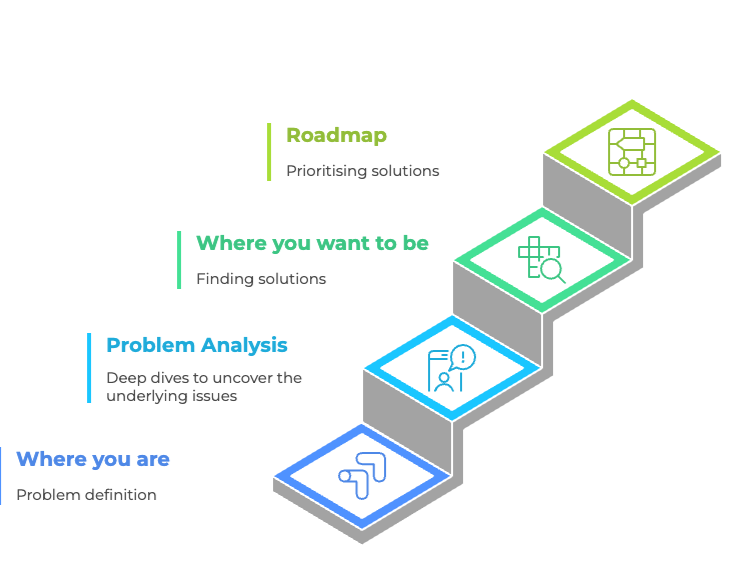My process
We have a saying in Serbia: measure three times before you cut. That's my role—I help you assess where you are and where you need to be, so when you make 'the cut' (new technology, restructure, new strategy), you know where to start and what success looks like.
My process combines strategy and practical change and is just as effective at scale as it is on smaller team or project plans, team optimisation, audience journey design and workshop facilitation.
Tailor made
I always design a tailor-made response to your needs and work flexibly in a way that best suits the project to deliver the results you need.
Collaborative
Throughout the project I am in regular contact with your project lead, keeping you up to date on progress. You are an active participant in designing next steps. We work with stakeholders and teams to design and own solutions together.
Measurable
To measure progress, we can use the Digital Maturity Assessment to find the baseline and set maturity targets.
Three phases
1. Where you are now
Desk research of your strategies, data, and current digital activity
Stakeholder interviews to understand team culture and what's working (or not)
Digital Maturity Assessment to gauge organisational readiness
2. Where you want to be
Setting clear targets for digital maturity
Collaborative workshops to explore what 'good' looks like
Diamond-shaped thinking: wide exploration of options and ideas, then focused prioritisation
3. How to get there
Deep dives to identify root causes of problems
Co-designed solutions across People, Process, and Technology
Phased roadmap for implementation with small, testable steps
What you'll get
Discovery report: Your organisation's key challenges and strengths with clear recommendations
Roadmap: Prioritised actions phased over short, medium, and long term
Digital Maturity Assessment: Baseline and targets to measure progress
Team buy-in: Solutions created collaboratively that people actually want to implement
How I work
I'm both mirror and guide. I tailor my approach to your specific needs and work flexibly to deliver results. Throughout, you're an active participant in designing next steps.
I champion collaborative, human-centred approaches because team-created solutions actually work.
If you have any questions or discuss how I can help, do get in touch.

